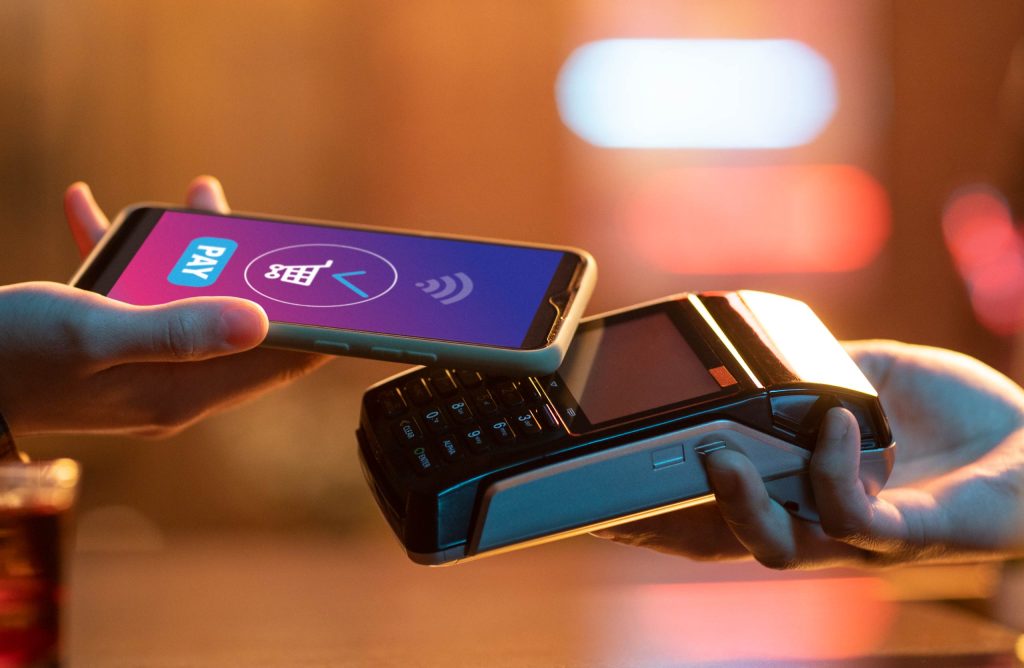The average user spends approximately 5 hours a day on their smartphone, which is almost a third of the time they spend awake 🤯
Over the last years, the number of mobile app downloads worldwide has been increasing constantly and, in 2021, users downloaded 230 billion mobile apps to their devices, up by more than 63 percent from 140.7 billion app downloads in 2016 (Source: Statista).
Based on this, it goes without saying that one of the most common (and successful) practices for businesses nowadays is having a mobile app, because it’s a win-win situation: users can access a wide range of functionalities, products and/or services from the comfort of their phones, wherever they may be, and companies can stand out from the competition; staying present, relevant and useful to their customers because they are with them all (or most of) the time.
So, you may be thinking to yourself “But I already have a website; Does my company need an app?”
And this is where most people get confused; a responsive design website is very different from a native app. With the first one, you can access directly from a web browser, and its optimization will allow for the website to adapt and modify its look, feel and usability in accordance to the device from where you are accessing, whether it is a computer, smartphone or tablet.
However, a website requires Internet connection, and you will always be restricted to the functionalities of the web browser, making it harder to stand-out from other websites. Whereas with a native app, you control everything from user interface, to mechanics, to the incorporation of the smartphone’s functions (hence the word “native”) like camera, GPS, etc. This is because a native app is implemented in the language of the device itself to which the content is to be adapted (one for each operative system). All in all, native apps offer a more personalized and interactive experience.
In 2021, global revenue from mobile apps increased to over 400 million U.S. dollars. This was an increase of over 80 million U.S. dollars compared to 2020. (Source: Statista).
And this trend shows no signs of stopping anytime soon.
If you are still not sure whether or not an app is the right thing for your business, here are some of the reasons why a company should have a mobile application and what it needs to consider before making the decision.
6 reasons to invest in a mobile application
- Personalization
A mobile app makes the users feel like the experience is custom made for them, hence leading to a “humanization” of the brand in their eyes, because they feel better understood and more identified with it.
An app allows access to specific information about users’ activity and preferences that can give you insight on what is the best approach to take with each one, and what you can show them that may yield better results and align with their preferences. Some information can even be used to create strategies based on things like a user’s location, for example. Therefore, apps are a great environment for lead capture, which, as a bonus, also helps to optimize CRM (customer relationship management).
This is especially useful in today’s overstimulated world, where the options are endless, but customers will always favor a company that focuses on their needs and listens to them. Eventually, this will lead to more efficient user acquisition, customer retention and finally, to obtaining customer loyalty.
Having an app is also a great way to build trust and credibility in your business, since you may be perceived as having a more serious strategy and being more dedicated towards your public.
AI technology is also a potential feature that can be integrated into the app in order to automate personalized and immediate responses and attention to users. Things like chatbots, for example, will help with scaling your customer service.
- Accesibility
The evolution of technology has allowed for a wider range of functionalities for people with disabilities such as limited vision or hearing, motor impairments, color blindness and cognitive disorders. Elements like high color contrasts, speech-to-text, text-to-speech and enhanced readability allow for a more inclusive design.
This is still being slowly standardized, but if you take these features into consideration you will for sure attract more users than you would if you only target a generic audience.
- Differentiation from the competition
When your business has an app, it operates on its own personal space, away from third-party mediums and platforms overcrowded with other businesses that are constantly competing to get the users’ attention.
Think of an app as having your own physical store, as opposed to being part of a department store full of other businesses. This is a way to stand-out and will help strengthen your brand.
You can create a unique visual identity, your own language and your own rules, because you have your own “channel” to reach out and communicate with users.
- Monetization
Aside from generating income through e-commerce features for products or services, an app also means a new medium to generate additional profit through elements such as in-app advertisement, premium paid subscriptions with extra benefits and functionalities, exclusive offers, fidelity programs, etc.
Caution: Be careful not to overdo it with the in-app advertisement, since it may be a bit intrusive and exasperating for some users.
- Always be present
If a user has downloaded the app, then you have the opportunity to stay relevant and present to them all day long, with the smart use of push notifications. With these, you can directly involve the user in your communications. You can “converse” with them about new content or additions to the app, which also increases brand awareness and recognition, because you are constantly reminding them of your existence and what you can offer. Think of it as a wake-up call to get more visibility.
An app (along with these convenient push notifications) will provide a new way to promote products and services and it will give you a spot and presence in app stores.
Caution: Regulate notifications so that users don’t think of them as spam, because the moment they perceive that you are bothering more than helping, they will remove your app from their phones.
- Improve usability
Nowadays, customers, especially the younger demographics, prefer texting over talking. Adding a direct message feature within your app is an ideal way to cater to these needs, where the user can send enquiries through the app, alongside all the other functionalities.
For e-commerce businesses, this also means that they can make any purchases directly on the application, without having to contact anyone and without having to leave their homes.
Furthermore, with an app, you are guiding the user through every step of the purchase process, making it easier for them and therefore making them more likely to buy.
As mentioned before, a native app has access to a smartphone’s included functions, such as camera, GPS, microphone, etc. But it can also integrate more advanced technologies such as QR codes, voice recognition, touch ID or augmented reality, and these elements are much harder to be developed from a responsive website. Moreover, it is easier to achieve offline availability on a mobile app, since most features don’t require an Internet connection.
⬇
You may be thinking how developing an app for your business may involve a big investment. But rest assured, the potential additional profit you could be making through your app, not to mention the brand enhancement, is bigger than the investment cost.
Thinking of taking the leap towards the world of mobile applications? Here are some aspects to consider before making the decision:
- Idea
Having a clear focus on your objective is the best way to start projecting whether or not to develop an app for your company. Identify the problem that your app would be intended to solve and keep going from there.
- Previous research
Is there already an app that can do what you are thinking of doing? Investigate by looking into what the competition is doing, and try to come-up with ways to stand-out.
Target audience is also an important element to consider and understand beforehand: you can’t target “everyone”, because you can’t reach everyone. You need to segment your audience so you can focus your efforts and app’s utilities on the right demographic.
- Value proposition and differentiation
Keep it interesting and fresh; offer great functionalities that are genuinely useful and solve a problem that can’t be solved elsewhere. Design an attractive, clean interface, and make it intuitive and easy to use. Adapt to the user’s needs.
Lastly, think of monetization. How are you going to manage revenue? Decide if you will charge a download payment for your app, or if it will generate income through in-app ads or premium subscription services. This is an important consideration for the return on investment. And also, don’t skip the promotion; no one will download your app if they never heard about it.
Some app trends to know about in 2022
🖲 Blockchain technology and decentralization
🖲 Secure access with biometric authentication (fingerprint, face ID, voice recognition, etc.)
🖲 Internet of Things (IoT) app integration for smart objects.
🖲 Augmented Reality and Virtual Reality
🖲 Adaptive apps for foldable devices (smartphones and tablets)
—-
👉 No matter what type of business you have, having your own mobile app is always a great option, and is guaranteed to set you apart from the competition and upgrade your customer conversion game 😎






